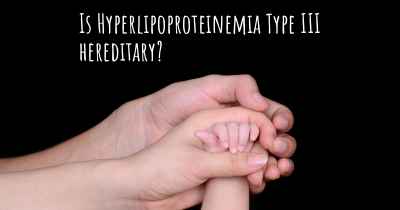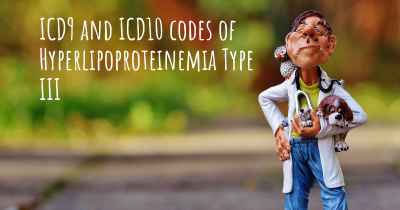What is the history of Hyperlipoproteinemia Type III?
When was Hyperlipoproteinemia Type III discovered? What is the story of this discovery? Was it coincidence or not?

Hyperlipoproteinemia Type III, also known as dysbetalipoproteinemia or broad beta disease, is a rare genetic disorder characterized by abnormal lipid metabolism. It was first described in the medical literature in 1967 by Fredrickson and Levy. This condition is caused by a mutation in the gene encoding apolipoprotein E (APOE), a protein involved in the transport and metabolism of lipids in the body.
The history of Hyperlipoproteinemia Type III:
In the mid-20th century, researchers began to investigate the underlying causes of various lipid disorders. It was during this time that Fredrickson and Levy identified a new type of hyperlipoproteinemia, which they named Type III. They observed that patients with this condition had elevated levels of cholesterol and triglycerides in their blood, leading to the development of atherosclerosis and other cardiovascular complications.
Further studies revealed that Hyperlipoproteinemia Type III is an autosomal recessive disorder, meaning that individuals need to inherit two copies of the mutated APOE gene (one from each parent) to develop the condition. This genetic mutation affects the structure and function of apolipoprotein E, impairing its ability to properly clear lipids from the bloodstream.
Signs and symptoms:
Hyperlipoproteinemia Type III typically manifests in adulthood, usually between the ages of 20 and 50. The most common symptoms include xanthomas (yellowish deposits of cholesterol under the skin), tuberous xanthomas (nodules on the elbows and knees), and corneal arcus (a white or grayish ring around the cornea of the eye). These physical manifestations are often accompanied by symptoms of cardiovascular disease, such as chest pain, angina, and peripheral vascular disease.
Diagnosis and treatment:
Diagnosing Hyperlipoproteinemia Type III involves a combination of clinical evaluation, lipid profile testing, and genetic analysis. The lipid profile typically reveals elevated levels of total cholesterol, triglycerides, and remnant lipoproteins. Genetic testing can confirm the presence of the APOE mutation.
Management of Hyperlipoproteinemia Type III focuses on reducing the risk of cardiovascular complications. Lifestyle modifications, including a heart-healthy diet, regular exercise, and weight management, are essential. Medications such as statins, fibrates, and niacin may be prescribed to help lower lipid levels. In severe cases, apheresis, a procedure that filters lipids from the blood, may be necessary.
Research and future prospects:
Over the years, researchers have made significant progress in understanding the molecular mechanisms underlying Hyperlipoproteinemia Type III. This knowledge has paved the way for the development of potential therapeutic interventions. For example, gene therapy approaches aimed at correcting the APOE mutation are being explored in preclinical studies.
Additionally, ongoing research is focused on identifying novel drug targets and treatment strategies to better manage this rare lipid disorder. The ultimate goal is to improve the quality of life for individuals with Hyperlipoproteinemia Type III and reduce the risk of cardiovascular complications.
In conclusion, Hyperlipoproteinemia Type III is a rare genetic disorder characterized by abnormal lipid metabolism. It was first described in 1967 and is caused by a mutation in the APOE gene. The condition presents with elevated cholesterol and triglyceride levels, leading to cardiovascular complications. Diagnosis involves clinical evaluation, lipid profile testing, and genetic analysis. Treatment includes lifestyle modifications and medications to lower lipid levels. Ongoing research aims to develop new therapeutic interventions for this rare disorder.








